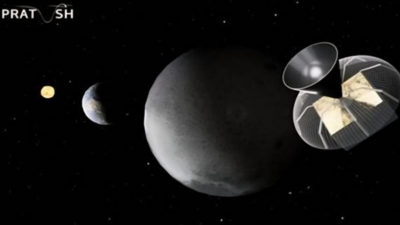
BENGALURU: A computer no bigger than a credit card may play a key role in answering one of the biggest questions in astronomy — when did the first stars in the Universe begin to shine?Scientists at Bengaluru’s Raman Research Institute (RRI) have built a compact digital receiver system based on a single-board computer (SBC) for a proposed space payload called PRATUSH (Probing ReionizATion of the Universe using Signal from Hydrogen). The project is supported by the department of science and technology (DST). “The aim of PRATUSH is to detect faint radio signals from hydrogen atoms, which hold clues to the ‘Cosmic Dawn’, the period when the first stars and galaxies formed,” DST said. It added that these signals are extremely weak and are usually lost under stronger radio noise from Earth, including FM transmissions. To avoid this problem, PRATUSH is designed for a future mission on the far side of the Moon, which is free from Earth’s interference and is considered the quietest place in the inner Solar System for such observations.“The heart of the system is a small computer similar to a Raspberry Pi. This SBC acts as the controller of PRATUSH’s radiometer. It coordinates the antenna, receiver, and a powerful chip known as a Field Programmable Gate Array (FPGA) that processes streams of cosmic data,” DST said.Girish BS, Research Scientist E at RRI’s electronics engineering group, said SBCs, as scaled-down versions of desktop or laptop computers, deliver an appealing balance of size, performance, and efficiency to manage the data generated by FPGAs through software instructions.The SBC also records, stores, and calibrates this information, ensuring smooth operation while keeping the size, weight, and power needs very low — all of which are vital for space missions.Tests of the laboratory model have shown encouraging results. With 352 hours of data collection, the receiver was able to reduce noise to extremely low levels, proving it could be sensitive enough to detect the faint signals from the early Universe.Researchers say the use of an SBC makes the system lighter, more efficient, and less power-hungry compared to traditional solutions. In the future space version, a commercial Raspberry Pi can be replaced with a space-qualified equivalent.If successful, PRATUSH will give scientists a new way to study how the first stars shaped the Universe. It may even open the door to discovering new physics. Remarkably, at the core of this ambitious effort lies a tiny computer quietly orchestrating one of astronomy’s most difficult tasks — listening to the Universe’s earliest whispers.










